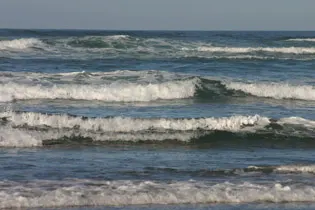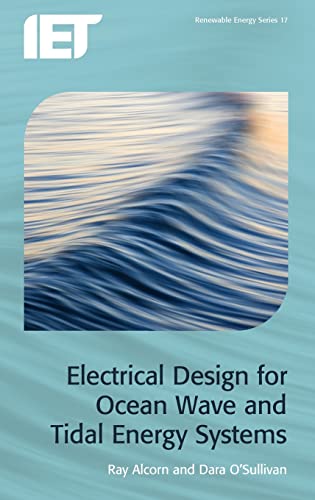
Environmental Impact of Wave Energy
The Environmental Impact of Wave Energy
![]() Wave Energy is perceived to be a non-polluting and renewable source of energy. While wave energy devices may not produce none of the atmospheric greenhouse gas type pollutants and emissions such as carbon dioxide and nitrogen oxides commonly associated with burning fossil fuels to generate electricity. But the environmental impact of wave energy with regards to the local area also needs to be considered.
Wave Energy is perceived to be a non-polluting and renewable source of energy. While wave energy devices may not produce none of the atmospheric greenhouse gas type pollutants and emissions such as carbon dioxide and nitrogen oxides commonly associated with burning fossil fuels to generate electricity. But the environmental impact of wave energy with regards to the local area also needs to be considered.
However, virtually all forms of electrical generation whether renewable or conventional will have an impact upon the environment in some way shape or form, but it is generally thought that Wave Energy, being a clean energy source which can replenish itself naturally over a short period of time, is less environmentally degrading than some other forms of renewable power generation.

We all know that there are several major benefits of using renewable energy sources, such as wind, solar, hydro, wave, tidal and biomass in terms of their impact on energy efficiency and climate change, as well as the security of having a long term energy supply.
These renewable energy sources are also important because they reduce our dependence on carbon based fossil fuels, enhances energy efficiency, and reduce harmful greenhouse gas emissions.
But there are draw backs to any form of energy generation scheme and wave energy is no exception. Any time you convert one form of energy into another you inadvertently disturb other things and as such there will be side effects.
For example, with fossil fuels we know that there are atmospheric pollution issues when they are combusted, or with nuclear power there are issues with the waste and spent fuel-rods, as well as the potential for radiation leakage if not handled properly.
The deployment and use of wave energy devices and schemes can also have an impact on the environment in terms of the local shipping and fishing industries as well as on the local environment. Some of the environmental impacts of wave energy may be beneficial while some others could be potentially harmful.
Although little is known at the moment about the potential environmental impact from wave energy devices and other ocean based technologies due to the fact that many are still in their experimental or early stages of deployment and as such there is very little or no direct operational experience, many wave energy schemes are building on the lessons learned from more mature ocean based oil drilling platforms and offshore wind power industries.
Because wave energy generation occurs on the oceans surface either shoreline, near-shore, or located far out at sea, the possible environmental effects of wave energy generation are similar in many ways to those of offshore wind power generation. Although none of these environmental issues are considered to be critical, the following list helps provides a generalised summary of the most common environmental impacts, both positive and negative, of wave energy devices.
Most Common Environmental Impacts of Wave Energy
- Coastal Erosion – Onshore and near-shore schemes may have an effect on coastal erosion due to alteration of currents and waves. Tidal velocities, wave amplitude and water flow maybe altered in proportion to the scale of the array.
- Device Construction – Possible impact during installation from anchoring these devices. Many wave energy devices are secured or tethered to the ocean floor using pilings, concrete blocks, anchors and chains. Site preparation may involve dredging and scouring of the sea bed to install electrical cables. the amount of ocean bottom disturbance would depend on the number of devices installed and the mooring systems employed.
- Environmental – While wave energy produces no greenhouse gases or other atmospheric pollutants whilst generating electricity, emissions do arise from other stages of its construction, transportation and life cycle. Also potential impacts associated with the release and leakage of hydraulic fluids for hydraulic rams, power trains, lubricating oils and fluids, anti-corrosion as well as biofouling paints and coatings into the surrounding seas.
- Fishing Industry – Exclusion zones around offshore devices could impact on local fishing areas. Anchor lines, tethers and power cables restrict the use of nets while floating devices can create sheltered conditions providing benefits to some marine species and habitats by limiting access and fishing at the site. However, as with marine reserves, fishing activity may increase directly outside the boundary of the installation.
- Marine Eco-system – Marine mammals may be vulnerable to the floating structures or they may act as barriers to marine movement and migration affecting the fauna and flora on the seabed. Most offshore wave energy devices are moored directly to the sea floor and mooring lines could pose a threat of entanglement for some animals, especially larger whales. Floating wave energy devices could entice sea birds to use the structures as temporary roosts.
- Navigational Hazards – Possible navigational hazards to shipping as their low profile could result in them being difficult to detect visually or by a ships radar. Potential impact on shipping if wave energy devices are not illuminated at night or if their moorings break away during storms. Also, water quality may be affected due to potential oil spills from increased boat traffic in the area for maintenance and repair.
- Noise Pollution – The constant noise from wave capture devices especially in rough conditions may have an impact on whales and dolphins that use echo location to hunt. For shoreline and nearshore devices, the levels of operational noise may constitute a noise nuisance locally on the beach or shoreline. However, when fully operational any device generated noise will probably be masked by the natural noise coming from the wind and waves.
- Recreational Activities – Offshore and nearshore devices could have an effect on some forms of recreational swimming and of water sports around the floating devices. Sub-aqua diving and water skiing might benefit from the shelter provided by these devices but sailing and wind surfing may suffer. Also, visual impact of large scale installations on tourism as the water depth required by nearshore devices might only be a few hundred yards offshore.
- Sedimentary Flow – The placement of onshore and nearshore wave energy installations such as device platforms, anchors, and cables could change the flow of the water and sands immediately around the structures. Changes in water velocities will impact on sediment transport, coastal erosion, and the deposition of coarse sediments such as pebbles or rocks. Slower or restricted water currents will increase the depositing of sediment.
Then the generation of electricity using ocean wave energy and ocean designed devices is a promising prospect and another alternative way to help reduce our current dependency on non-renewable energy fuels. But technological challenges and our lack of understanding of the associated environmental impacts of wave energy compared to the more traditional energy sources needs to be better understood. In general for wave energy devices some of these environmental impacts mentioned above will reduce for floating offshore devices and increase for near and shore-based devices.
There are real advantages to developing wave energy and ocean based technologies. Emissions-free electricity is, of course, the principal advantage, but another important advantage is energy security. Wave energy is considered a clean energy which replenishes itself naturally over a short time or is in some sense is inexhaustible (such as solar energy) as there is enormous amounts of energy in the oceans waves, but there is not much energy at any given location.
As with other energy sources, wave energy has both environmental and economic implications which must be considered when planning a new installation. Many of the environmental problems associated with wave energy are similar to those associated with offshore wind energy generation schemes. The lessons learned from offshore oil production, wind power and other such ocean based industries can provide vital information in their design to lessen the environmental impact of wave energy.










Who is the author for this article
You can reference the author or website as: Alternative Energy Tutorials or the URL of the tutorial itself.
who’s the writer for this article? i need this for citing my research paper. thanks!
Alternative Energy Tutorials
hi bob ross
GREAT SOURCE
hi berny